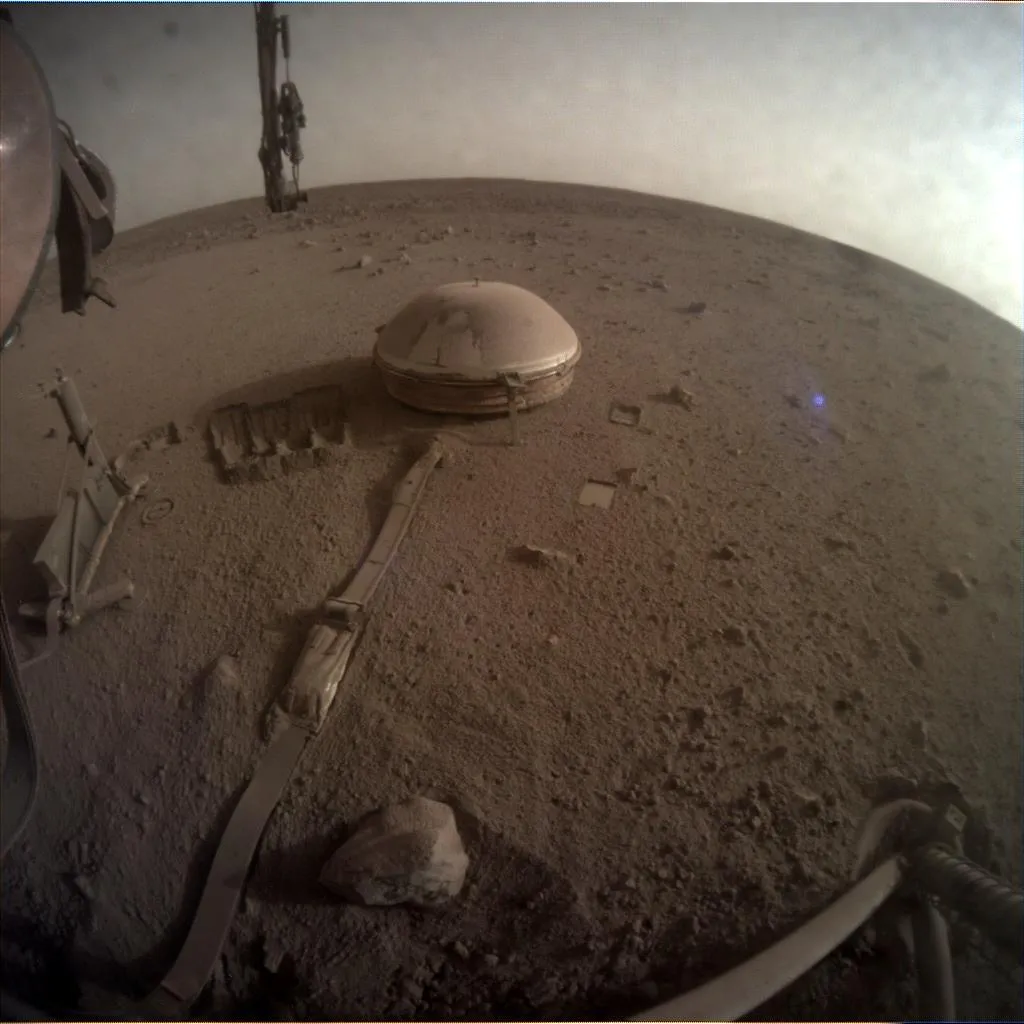Just like Earth, Mars has quakes. As you might have guessed, these are known as marsquakes.
And data from a now-defunct NASA robot on Mars has revealed that quakes on Mars are being altered in strange ways as they pass beneath the surface of the planet.
More on Mars

Scientists believe they've worked out what it is, and the answer is revealing more about the bombardment of ancient Mars during the Solar System's chaotic infancy.

Ancient Mars, chaotic Solar System
Shortly after its formation, our Solar System was a dangerous place.
The early planets and moons were bombarded with spacerocks that littered the Solar System, and Mars was no exception.
Today, strange alterations in marsquakes are caused by something beneath the surface of the Red Planet, and scientists say it could be fragments from the aftermath of massive impacts 4.5 billion years ago.
The discovery is based on data captured by NASA’s now-retired InSight lander, which studied seismic quakes on the planet.
It captured the data used in this discovery before its mission ended in 2022.
Scientists say ancient impacts on Mars released enough energy to melt continent-size regions of the planet's early crust and mantle into magma oceans.
This action also pushed fragments of the spacerock impacts into the Red Planet’s interior.
There's no way to tell exactly what hit Mars during those early days of the Solar System.
But what scientists can say, is that the remains of the impacts are lumps of spacerock as large as 4km (2.5 miles) across, and they're scattered throughout Mars's mantle.
This is a sort of historical record that can only be found on worlds like Mars, which has no tectonic plates, meaning its interior hasn't been churned up the way Earth's has.
The finding was reported on 28 August 2025 in a study published in the journal Science.

Peering beneath Mars's surface
"We’ve never seen the inside of a planet in such fine detail and clarity before," says the paper’s lead author, Constantinos Charalambous of Imperial College London in the UK.
"What we’re seeing is a mantle studded with ancient fragments. Their survival to this day tells us Mars’s mantle has evolved sluggishly over billions of years.
"On Earth, features like these may well have been largely erased."
Key to these findings is data from the InSight mission, which operated on the surface of Mars and was managed by NASA’s Jet Propulsion Laboratory.

InSight placed the first seismometer on Mars’s surface in 2018 and recorded 1,319 marsquakes before the end of its mission in 2022.
Marsquakes produce seismic waves that pass through material beneath the planet's surface, and InSight was able to detect these waves and provide data on Mars's interior.
It's given scientists vital info on the size, depth and composition of Mars’ crust, mantle and core.
"We knew Mars was a time capsule bearing records of its early formation, but we didn’t anticipate just how clearly we’d be able to see with InSight," says Tom Pike of Imperial College London, coauthor of the paper.

Marsquakes
There are two types of quakes that occur on Earth, which also occur on Mars.
These are quakes caused by rocks cracking under heat and pressure, and those caused by meteoroid impacts.
Meteoroid impacts on Mars produce high-frequency seismic waves that vibrate from the planet's crust deep into the mantle.
Mars's mantle can be as much as 1,550km (960 miles) thick and is made of solid rock.
It can reach temperatures as high as 1,500°C (2,732°F).

This latest study looks at eight marsquakes that were altered significantly as they travelled deep into Mars's mantle.
"When we first saw this in our quake data, we thought the slowdowns were happening in the Martian crust," says Pike.
"But then we noticed that the farther seismic waves travel through the mantle, the more these high-frequency signals were being delayed."
Using computer simulations, the team saw that the slowing down and scrambling occurred as the waves passed through small regions in Mars's mantel.
These regions seem to be lumps of material, different in composition to the rest of the mantle.
But how did they get there?

A view into ancient Mars
The team inferred the lumps are probably the remnants of giant asteroids or other spacerocks that hit Mars during the early days of the Solar Sstem.
These impacts generated oceans of magma as they pushed deep into the surface in both large shards and smaller fragments, like shattered glass.
This theory fits with the idea that the early Solar System was bombarded by asteroids and other planetary bodies.
Without the interior churning that occurs on Earth, Mars's interior is less changed than other planets.
"[This tells us] Mars hasn’t undergone the vigorous churning that would have smoothed out these lumps," says Charalambous.
What's more, discoveries like these on Mars could indicate what's going on beneath other rocky planets that lack plate tectonics, such as Venus and Mercury.

